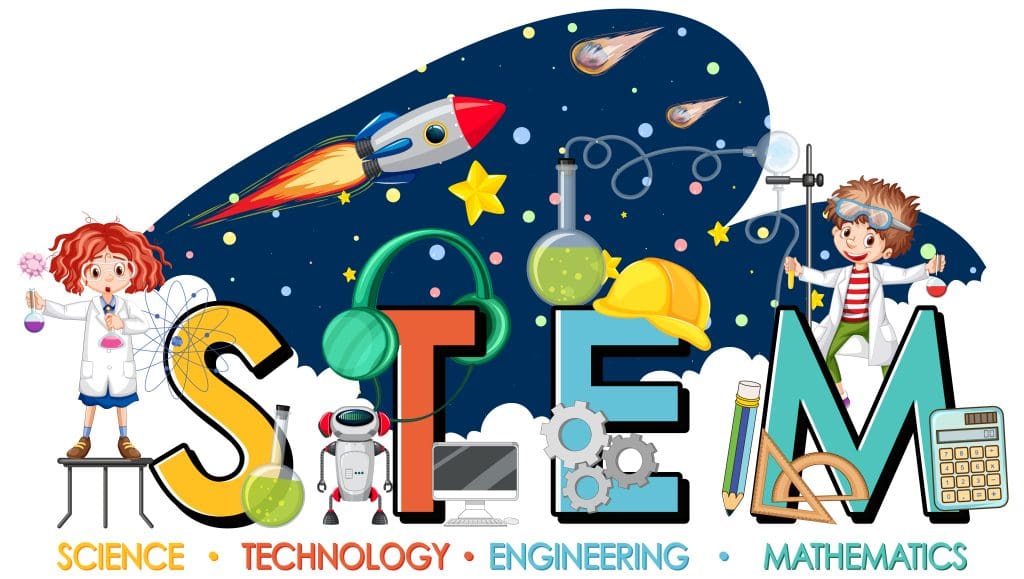Dr. George Arvind, Vice Chairman – Sunbeam group of schools I Educationist I UCL I Harvard

For a long time, there has been a consistent emphasis on STEM education. It refers to curriculum and careers focussing on Science, Technology, Engineering and Mathematics. The rise in science and tech-related job opportunities in the USA gave a push to STEM education. Schools everywhere emphasise STEM subjects to train the youth for careers in these fields. As the global economy evolved, STEM degrees gained prominence and offered lucrative careers.
But over time, educators and policymakers realised the importance of encouraging critical thinking skills in children. So they incorporated Arts into the STEM framework to give students an interdisciplinary education. As STEM evolved into STEAM, the curriculum was re-designed to allow students to develop essential skills such as creativity, collaboration, and communication and technical skills in areas such as coding, robotics, and engineering.
Importance of ‘Arts’
Art is an integral part of the curriculum. It encourages creativity and innovation. Together with design, it helps students understand the real-world applications of STEAM principles. These fields are similar in so far as they all involve a creative process and use multiple methods for inquiry.
STEAM education: Can it prepare students for the future workforce?
The STEAM approach employs project-based learning across all five disciplines. It encourages students to engage both sides of their brains when dealing with a subject. For example, science students have to prepare well-detailed diagrams to illustrate processes. Conversely, art students must adopt logical and analytical thinking to scale their work.
The future workforce will have to communicate artistically as well, in addition to traditional modes of communication. They will need to have skills such as illustrating, animation, and model-building. An integrated STEAM approach can be significant here.
Technical Skills
STEAM teaches students to code, design, and build technology, which are valuable skills that will help students navigate an increasingly technologically-centred world.
Problem-Solving
Students are encouraged to think critically and solve complex problems. They learn to identify problems, gather information, analyse data, and develop solutions. These are essential skills for any career, especially in the future, where issues will become more complex, and data analytics will play a significant role in solving them.
Innovation
STEAM education fosters creativity and innovation. Students are encouraged to think beyond their perceived horizons, explore new ideas, and develop new products and technologies.
Collaboration
A vital aspect of STEAM education is collaboration and teamwork. Students work together to solve problems and develop projects, which helps them develop communication, leadership, and interpersonal skills.
Some misconceptions about STEAM education
With every new approach comes a set of worries— Is it relevant? Does it have a positive impact? Who does it really benefit? With STEAM, too, there are certain misconceptions.
#1. STEAM education is only for students who are good at maths and science
This is incorrect. STEAM education is designed to be inclusive and encourages students from all backgrounds to explore and develop skills in various subjects.
#2. STEAM education is only for students who want to pursue STEM careers
While STEAM education does prepare students for STEM careers, it also provides valuable skills that are transferable to many other fields. These include skills such as innovation, critical thinking and visual representation.
#3. STEAM education is all about technology
Some people think that STEAM education is all about technology and that it takes away from other subjects like art and design. In reality, STEAM education incorporates art and design to promote creativity and innovation and help students understand STEAM principles’ real-world applications.
#4. STEAM education is only for high-performing schools
While funding and resources can be a challenge for some schools, STEAM education can be adapted to fit the needs and resources of any school.
#5. STEAM education is too expensive
There is a misconception that STEAM education requires expensive equipment and resources. This is dangerous as it disregards the pedagogy that forms the basis of STEAM. It gives students room to collaborate and solve real-world problems. While technology and equipment can be expensive, the focus should remain on the process, not the tools.
We need to recognise that STEAM education is inclusive and promotes creativity and innovation. With the right resources and support, any school can implement STEAM education and prepare students for the future workforce.
How schools can improve STEAM education
One of the most effective ways to improve STEAM education in schools is to provide professional development for educators. They need the training and resources to effectively teach STEAM subjects and integrate STEAM principles into the curriculum.
Apart from that, providing students access to tools like computers, and tablets (at the very least) goes a long way in supporting hands-on learning. Additionally, combining technical skills with design thinking and project-based learning can foster innovation and creativity.
The future of careers in STEAM fields
The future looks bright, as STEAM fields are expected to grow significantly in the coming years. In addition, the demand for workers with science, technology, engineering, art, and mathematics skills is projected to increase as many industries and sectors become increasingly reliant on technology and automation.
Taking the US example, according to the Bureau of Labor Statistics (BLS), many of the fastest-growing occupations in the US are in STEAM fields. For example, jobs in computer and information technology, which require skills in technology and engineering, are expected to grow by 11% between 2019 and 2029, much faster than the average for all occupations. Similarly, jobs in healthcare, which increasingly rely on technology and data analysis, are also expected to snowball.
These trends are bound to reach our shores with increasing global interdependence. The Government of India has already established Atal Tinkering Labs, an initiative that promotes STEAM education in India by setting up dedicated labs in schools nationwide.
Moreover, the COVID-19 pandemic has accelerated the adoption of technology and digital tools, making STEAM skills even more essential for many careers. As the world becomes more digitally focused, the demand for workers with skills in STEAM fields is only likely to increase.
Stakeholders’ role
As educators and parents, we have the responsibility to ensure that our children are prepared for the workforce of the future.
We have to prioritise STEAM education in our schools and communities. This can be achieved through supporting initiatives that promote STEAM education, such as the establishment of maker spaces, science fairs, coding clubs, and robotics teams. Additionally, schools must invest in training the educators, funding STEAM programs, and establishing partnerships with local businesses.
By prioritising STEAM education, we can ensure that our children have the skills and knowledge to contribute to their communities and the world. So let’s work together to ensure that our children have access to high-quality STEAM education and the opportunities they need to reach their full potential.


